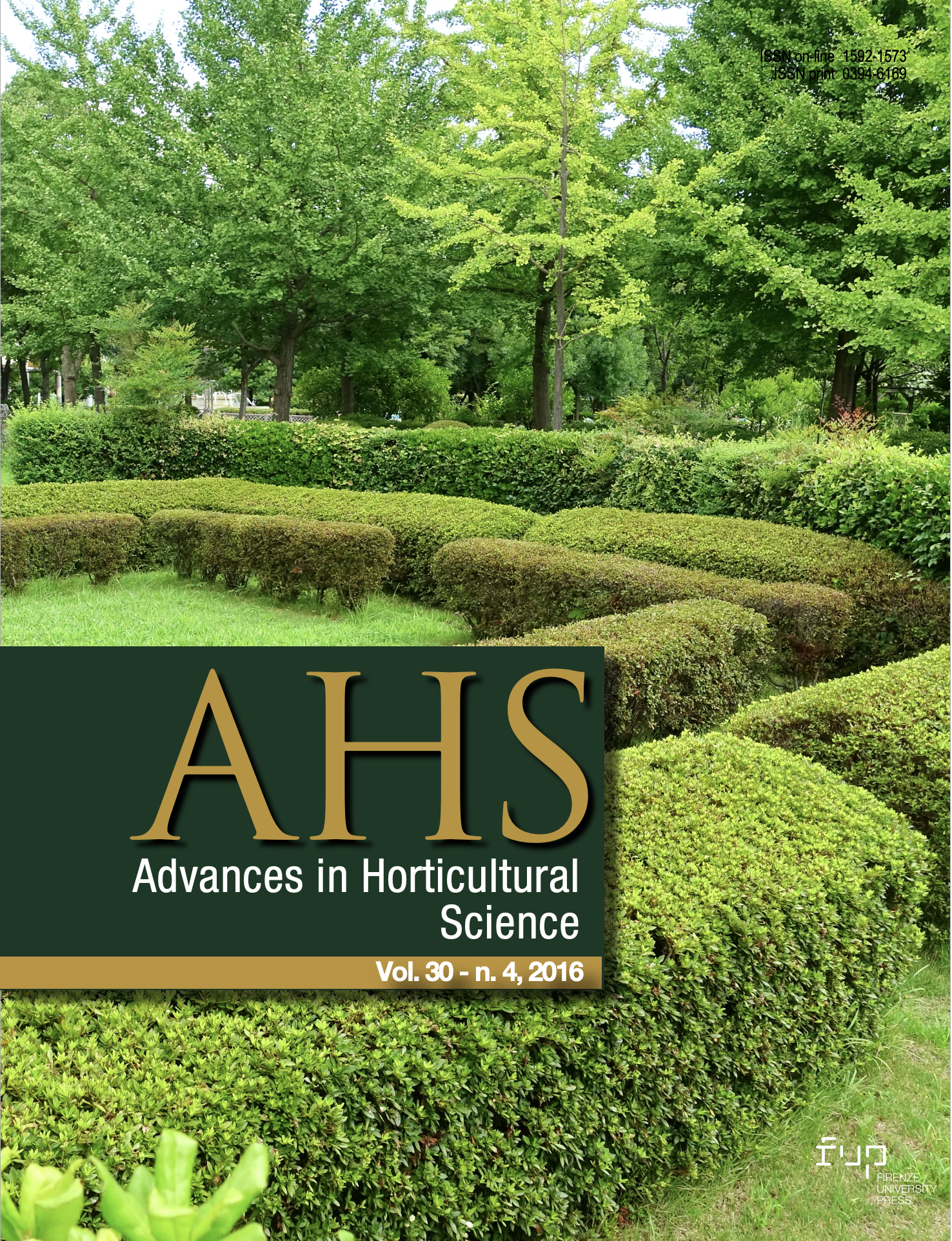Abstract
During the period 2008-09 and in the frame of PHDP 58 Afghan and 18 foreign pomegranate accessions have been collected and grown under homogeneous environmental and cultivation practice conditions in ex situ collections. Standardized procedures were adopted to describe mature trees, leaves, flowers and fruits for a total of 30 phenotypic traits. Within the National Collection of Pomegranate of Afghanistan, coefficients of variability ranged from 8.8 to 31.7% for fruit diameter and weight of non edible part, respectively. Principal component analysis revealed the absence of correlated variables among different organs. The whole set of accessions resulted discriminated on the basis of the studied morphological parameters and all the accessions were grouped into 3 sub-sets by hierarchical cluster analysis. Local accessions resulted distributed in the 3 clusters, nevertheless the largest one held all the foreign varieties while the second one included all the accessions collected under the putative name of ‘Bedana’. The adopted morphological studies allowed to identify one true-to-type ‘Bedana’ accession, considered the best Afghan variety for fresh consume due to its very soft seed, and to solve the cases of homonymy. Analogously, various accessions originally collected from different regions of Afghanistan under the name of ‘Kandahari’ were identified and renamed.






